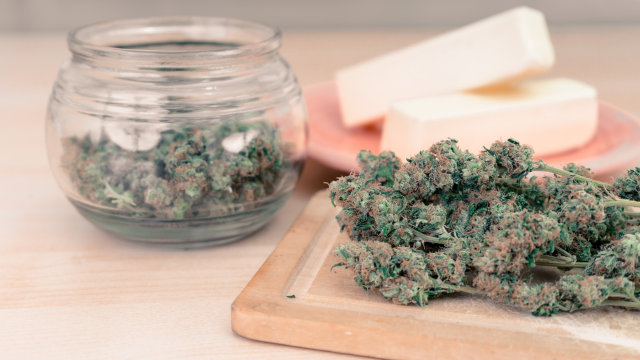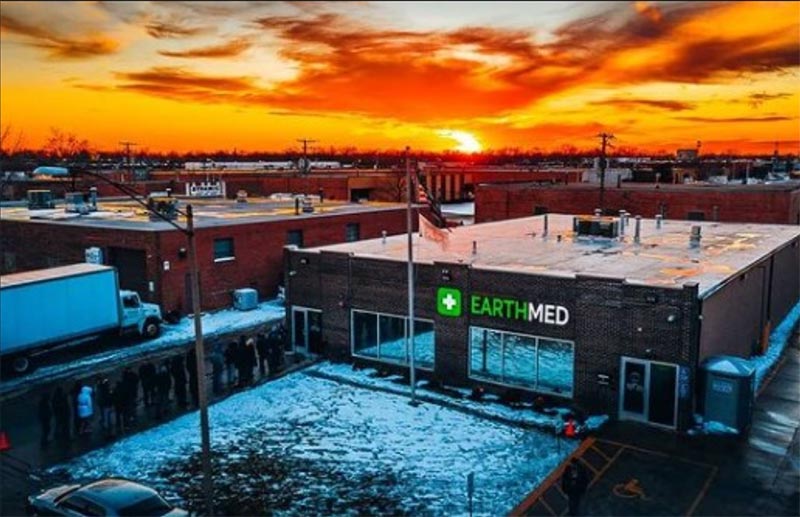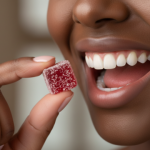Are you at least 21 years of age or hold a valid medical marijuana card?
Daily Specials
{{ special.title }}
{{ special.description }}
*{{ note }}EARTHMED BLOG

About the Cannabis Curing Process

In the world of cannabis cultivation, enthusiasts and connoisseurs alike know that the journey from seed to smoke is a nuanced process. While a growing plant demands attention and care, the cannabis curing process is equally crucial for unlocking the full potential of your harvest. Let’s explore the art of cannabis curing, giving you the tools to enhance flavor, aroma, and potency like a seasoned cultivator.
What Does Curing Cannabis Do?
Before diving into the nitty-gritty of cannabis curing, let's touch on why it matters. Curing is the methodical drying and aging of harvested buds to enhance their flavor, aroma, and overall smoking experience. Think of it as the fine wine aging process for your favorite strain – patience is key.
Curing cannabis is a critical step in elevating its quality and preserving key attributes. By facilitating the breakdown of sugars and starches stored for growth, curing significantly enhances the aroma and flavor of cannabis. It also helps to stop the degradation process that is initiated by enzymes and bacteria after harvest. Besides flavor, curing contributes to stability and shelf life, especially for commercial growers, as uncured cannabis is prone to mold and mildew.
In addition to stability, curing is vital for terpene preservation—the delicate molecules responsible for cannabis's characteristic smell and taste. Preserving these molecules through curing allows unique aromas and flavors to shine, making it essential for connoisseurs seeking a premium product. Proper curing allows cannabinoids to fully develop, potentially increasing potency, kind of like reducing a sauce.
Harvesting and Trimming
The cannabis harvest is a crucial moment in the cultivation where you start to see the fruits of your efforts. Harvesting at the peak of trichome development ensures a good blend of consumption effects and that particular strain’s aroma. Once the buds are harvested, you’ll want to trim them to minimize the amount of leafy greens and to help the drying process. It's akin to giving your plants a polished haircut, eliminating excess leaves and stems to showcase the cannabinoid and terpene-rich flowers. It's not just about obtaining high-quality buds; it's about preserving their potency, flavor, and overall excellence. Trimming is a meticulous task, requiring precision and attention to detail. Whether you opt for scissors or trimming machines, the goal is to present your buds in their best light.
Drying
Once your buds are looking refined, it's on to the drying phase. The plants are hung upside down in a cool, dark space with proper airflow before the next critical step: curing. This phase allows the buds to breathe and prepare for their full potential to unfold. This is also when most of the water is removed from the buds. But how long should cannabis be dried before curing? Hanging your buds upside down in a well-ventilated space for 7-14 days allows for a slow and steady drying process, preventing uneven curing. Maintaining the right environment during those 14 days of drying is essential. You’ll need to maintain a humidity level of 45-55% and a temperature range of 60-70°F.
Crafting the perfect cure for your cannabis buds involves a delicate dance from harvest to consumption. Starting with the basics, timing is crucial, and harvesting when trichomes are at their peak ensures a potent and aromatic yield. After a meticulous trimming process, the drying dance begins.
When to Start Curing the Cannabis
Once your buds are dried to perfection, the curing process takes center stage. The buds should feel dry to the touch but still slightly moist on the inside. A good test is to bend a stem. If it snaps rather than bends, it’s dry enough. Placing them in glass jars, about 75% full, initiates the next phase. Start “burping” the jars by opening them once or twice daily for about 5-10 minutes. Burping the jars daily for the first two weeks facilitates a delicate balance of moisture and air exchange, akin to giving your buds a breath of fresh air. Gradually reducing the frequency of burping to once a week over subsequent weeks ensures a controlled curing environment.
As your buds marinate in their jars, patience becomes an art. A minimum of four weeks is recommended for curing, allowing for a thorough maturation of flavors and aromas. However, aficionados often opt for an extended curing period of 6-8 weeks for optimal results. While the waiting game can be challenging, resisting the urge for a sneak peek during the initial weeks is crucial.
Is Curing Cannabis Necessary?
Curing is generally recommended for the best flavor, aroma, and overall quality of your weed. However, it technically isn’t necessary for every batch of cannabis. Here are a few reasons to cure your cannabis:
- Improved Flavor and Aroma
- Smoother Smoke
- Better Potency
- Moisture Control
- Aging Benefits
If the cannabis is intended for immediate use, some growers may skip the curing process. However, the quality may not be as high.
In conclusion, the cannabis curing process is a nuanced journey requiring time, attention, and finesse. By following these steps with care and patience, you elevate your cannabis experience, with each flavorful, aromatic puff becoming a testament to your cultivation expertise.
{{ locations[0].name }}
{{ locations[0].address }}{{ locations[0].city }}, {{ locations[0].state }} {{ locations[0].zip }}
{{ locations[0].phone }}
Hours
Sun: {{ locations[0].hours_recreational.Sunday }}Mon: {{ locations[0].hours_recreational.Monday }}
Tue: {{ locations[0].hours_recreational.Tuesday }}
Wed: {{ locations[0].hours_recreational.Wednesday }}
Thu: {{ locations[0].hours_recreational.Thursday }}
Fri: {{ locations[0].hours_recreational.Friday }}
Sat: {{ locations[0].hours_recreational.Saturday }}
{{ locations[1].name }}
{{ locations[1].address }}{{ locations[1].city }}, {{ locations[1].state }} {{ locations[1].zip }}
{{ locations[1].phone }}
Hours
Sun: {{ locations[1].hours_recreational.Sunday }}Mon: {{ locations[1].hours_recreational.Monday }}
Tue: {{ locations[1].hours_recreational.Tuesday }}
Wed: {{ locations[1].hours_recreational.Wednesday }}
Thu: {{ locations[1].hours_recreational.Thursday }}
Fri: {{ locations[1].hours_recreational.Friday }}
Sat: {{ locations[1].hours_recreational.Saturday }}






